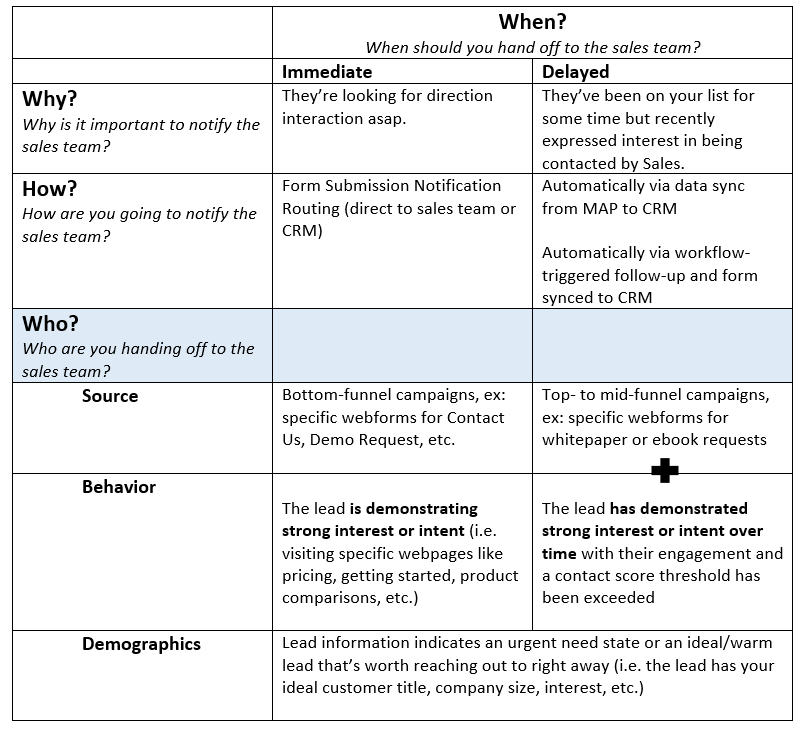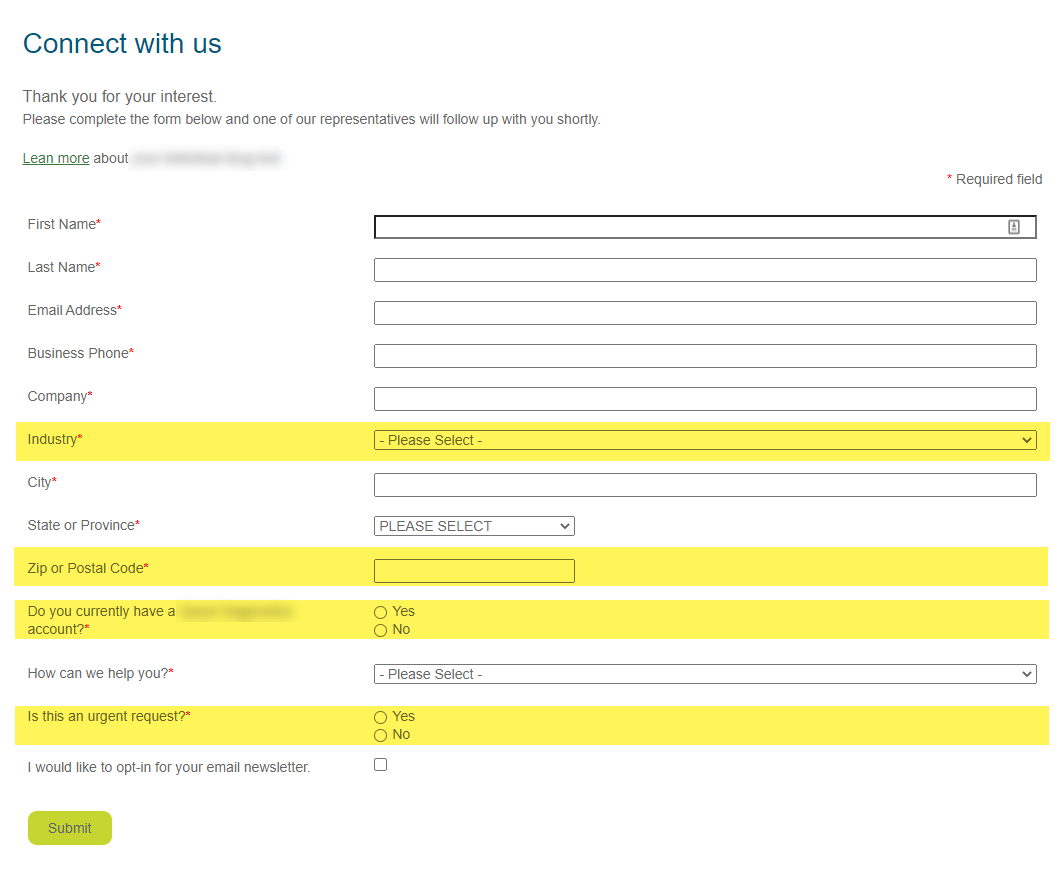Consider the various ways you generate leads – inquiry forms on your website, webinar registrations, tradeshow events, outbound prospecting, etc. As diverse as the opportunities are for lead gen efforts, so too are the need states of the leads themselves.
Ideally, lead states should guide follow-up attempts. For example, someone at a tradeshow who’s interested in a product demo may be expecting a call soon, whereas someone who just attended a webinar is looking for nothing more than the educational opportunity you provided. How and when you follow up with these different types of leads should align with their need state, so it’s important to talk about the difference between marketing qualified leads (MQLs) and sales qualified leads (SQLs) with your sales and marketing teams. Discuss what types of leads get entered in your CRM (and when) to ensure your sales and marketing teams are aligned.
I’m defining MQLs as people who have expressed some interest but aren’t quite ready for a talk with the sales team, and SQLs as people who have asked to be put in touch with a sales person – usually by submitting a contact form, or reaching out directly to request more information.
When it comes to lead routing, timing is everything. Consider these different factors for deciding when to hand off leads to the sales team:
Immediate Lead Hand-Off to Sales
You may want to notify the sales team right after a lead comes in if any of these factors are at play:
- Campaign Source: the lead has come from a bottom-funnel campaign conversion (i.e. retargeting, contact requests, demo requests, etc.)
- Lead Behavior: the lead is demonstrating strong interest or intent (i.e. visiting specific webpages like pricing, getting started, product comparisons, etc.)
- Lead Demographics: lead information indicates an urgent need state or an ideal/warm lead that’s worth reaching out to right away (i.e. the lead has your ideal customer title, company size, interest, etc.)
You can accomplish the hand-off by form submission notification routing – sending directly to a sales team member or syncing the lead to your CRM.
Delayed Lead Hand-Off to Sales
Depending on your targeting tactics, MQLs can stay on your list for quite some time, casually engaging with your content (nurture series, targeted email, etc.). There’s no one on the sales team actively managing this lead. But they may be giving you signs that they’re ready for a more direct interaction.
Consider handing off MQLs to your sales team based on any combination of these factors. In other words, Campaign Source alone isn’t enough here to qualify it as a sales lead.
- Campaign Source: the lead has come from a top- to mid-funnel campaign conversion (i.e. whitepaper or ebook requests)
- Lead Behavior: the lead has demonstrated strong interest or intent over time with their engagement and a contact score threshold has been exceeded
- Lead Demographics: same as stated above, but maybe you’ve recently collected this information to complete the lead profile and now you see lead information indicating an urgent need state or an ideal/warm lead that’s worth reaching out to right away (i.e. the lead has your ideal customer title, company size, interest, etc.)
This hand-off doesn’t have to happen after a manual review. Here’s another way of looking at criteria to help you decide when it’s appropriate to hand off a lead directly to Sales:

I love this webform because it asks for information that can be helpful for lead routing – the highlighted fields in particular.

Going through the exercise of outlining the differences between your MQLs and SQLs and being intentional with your lead routing can help improve customer experience and allow your sales team to focus on helping people who are ready for a conversation.
Not sure how to get started? We’re always here to help at expert@emfluence.com or fill in the form below.



